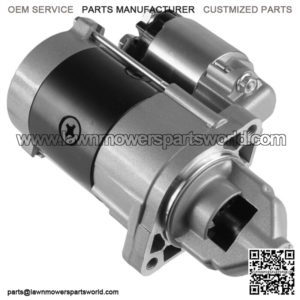- Locate the existing starter motor: The starter motor is usually located near the engine, typically on the side or bottom of the engine block. Refer to the lawn mower’s service manual or manufacturer’s instructions for the exact location of the starter motor.
- Disconnect the battery or electrical connections: If your lawn mower has a battery, disconnect the negative battery cable. This step is important to prevent any electrical current from reaching the starter motor during the installation process. Additionally, disconnect any electrical connections from the starter motor itself, such as wires or connectors.
- Remove the old starter motor: Use a socket set or wrenches to loosen and remove the bolts or screws that secure the starter motor to the engine block. Carefully detach the old starter motor from its mounting location.
- Inspect the new starter motor: Before installing the new starter motor, inspect it for any damage or defects. Ensure that it matches the specifications and requirements of your lawn mower. Check for any additional brackets or hardware that may be necessary for installation.
- Install the new starter motor: Position the new starter motor onto the mounting location, aligning it with the bolt holes or brackets. Insert the mounting bolts or screws and tighten them, ensuring that the starter motor is securely fastened to the engine block.
- Reconnect the battery or electrical connections: If the lawn mower has a battery, reconnect the negative battery cable. Reattach any electrical connections to the starter motor, ensuring a secure and proper connection.
“Keyword”
“how to fix a lawn mower starter”
“ride on mower starter motor problems”
“briggs and stratton lawn mower starter”
“installing a starter motor”
“how to take off a starter motor”

